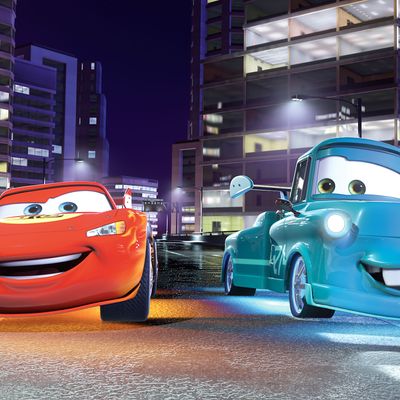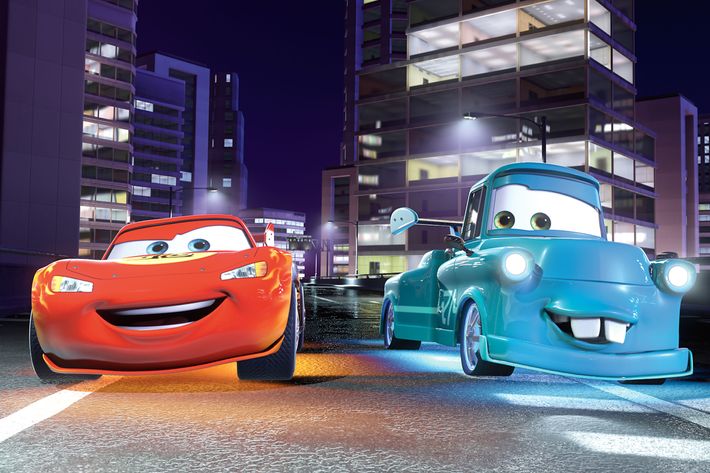

Even Pixar sometimes makes a lemon. It’s not that Cars 2 won’t get you (or really your average 9-year-old boy) from point A to point B somewhat entertainingly, but by Pixar’s outrageous standards of Oscar shoo-in virtuosity, this sequel is a disappointment at best.
Living up to Pixar fans’ spectacular expectations and sequelizing a toy-driven franchise that’s earned over roughly a gazillion bucks in kids’ merch must be tough: When you’re taking commercial risks on a silent robot on a dead planet and a grizzled sad old man with a flying house, there’s some logic in taking an easy victory lap. Talking cars is an easier sell, as it was with the first movie. And Cars 2 pits Lightning McQueen against the amusingly obnoxious F-1 racer Francesco (voiced by a John Turturro at his Dom DeLouise worst) in a three-city international race to promote a new type of green fuel.
Undoubtedly, there’s some thrill to the bright, cartoon postcard montages that introduce each city — Tokyo, Paris, and London — and McQueen’s fast, sprawling races have the plastic, pixel-count thrill of the Gran Turismo video games. But it soon becomes confused, or at least confusing. The race is sponsored by a former oil magnate with a sketchy past, giving rise to a James Bond–like subplot involving McQueen’s trusted, rusted tow-truck pal Mater (voiced by Larry the Cable Guy in a voice that starts off galunking and just keeps on chugging out moronic clichés). There’s a reason he was a comic-relief sidekick in the first film: It’s like giving Jar-Jar Binks his own movie to see Mater tangle it up with a hot little coupe love interest (Emily Mortimer) and a 007-like superspy (Michael Caine, who gets a bang-up introduction that is the film’s most elegant piece of storytelling). Still, since Mater is such an annoying clunker, this story line plays less like a spoof on Bond and more like a subpar episode of Chuck.
Ostensibly, the emotional through line is the evolving friendship between McQueen and Mater, but the two are physically separated for much of the film, as Mater gets lost in a miasma of clean fuels, secret oil reserves, secret agents, and romance. Even for a film about autos, this is a lot of plot machinery. What’s usually so exceptional about Pixar films — that Miyazaki-like ability to tap into something universal and simple — is absent. With three separate races to be run, an international conspiracy to unravel, and a crowded pit crew of supporting characters who each need their moment, the film’s race-speed transitions come so fast and so suddenly that the film’s just grinding its gears trying to keep up.
Will your kids have fun? Sure, though the green-energy subplot is too intricate. As for the parents, politically, it feels like a focus-grouped cop-out. Lefties will be flattered by the cars’ environmental ideals; conservatives will cheer when it turns out that green energy doesn’t work. Worry not, Disney shareholders: No automotive cross-branding opportunity was risked.
There’s plenty of vrooom and zoooom, but, at two hours, kids may be confused and even a little bored by Mater’s repetitive doofus humor and McQueen’s repetitive races. Maybe it’s been easier for Pixar to animate animals or cowboy toys or robots because we always imagined them to have their own personalities. As kids, when we played with cars, we raced them, we crashed them, we jumped them off couches — and imagined ourselves inside them, leaping off that staircase, or looping around that flimsy plastic track. We wanted to drive cars, not be cars. Maybe our vehicular fantasies will always remain mechanical — empty without some humanity inside them.

